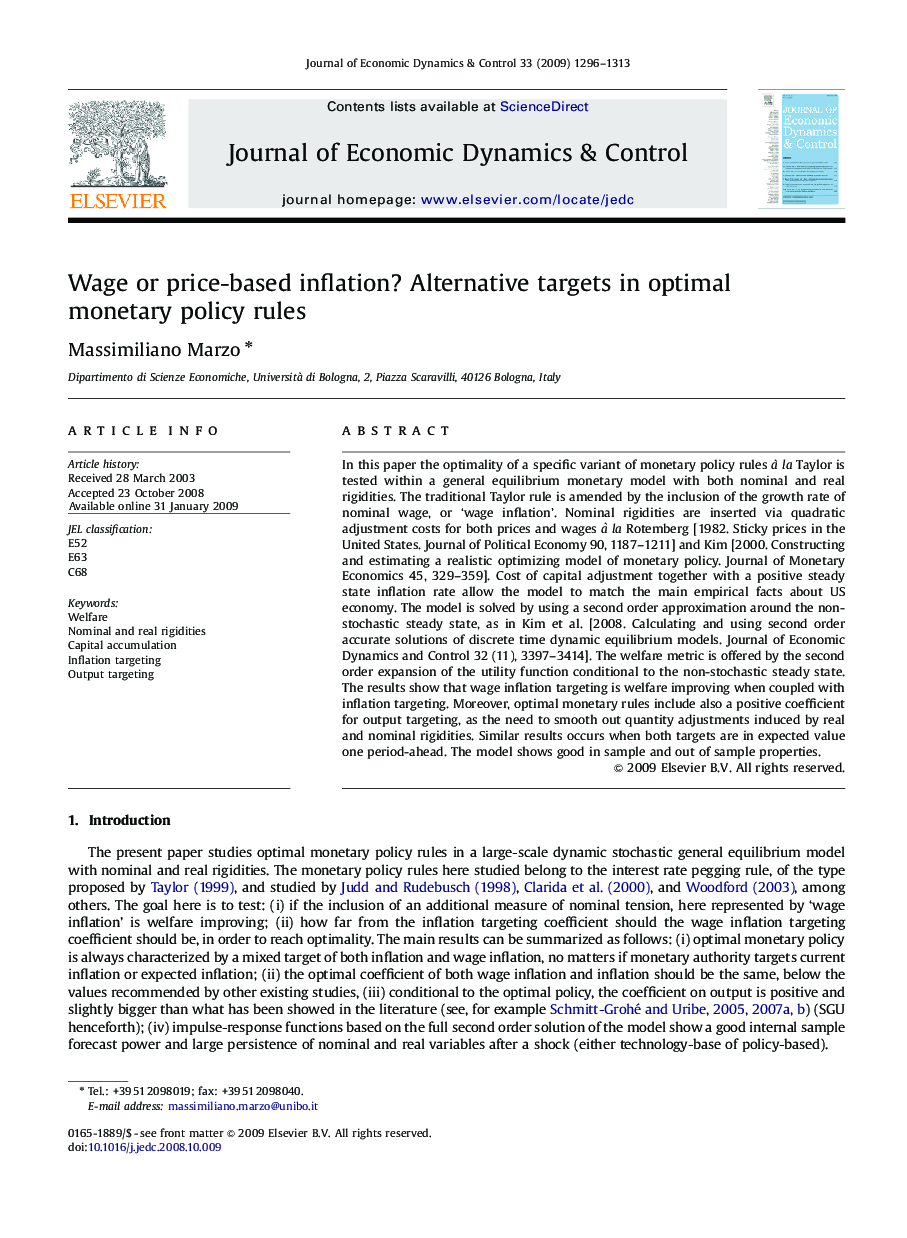| Article ID | Journal | Published Year | Pages | File Type |
|---|---|---|---|---|
| 5099140 | Journal of Economic Dynamics and Control | 2009 | 18 Pages |
Abstract
In this paper the optimality of a specific variant of monetary policy rules à la Taylor is tested within a general equilibrium monetary model with both nominal and real rigidities. The traditional Taylor rule is amended by the inclusion of the growth rate of nominal wage, or 'wage inflation'. Nominal rigidities are inserted via quadratic adjustment costs for both prices and wages à la Rotemberg [1982. Sticky prices in the United States. Journal of Political Economy 90, 1187-1211] and Kim [2000. Constructing and estimating a realistic optimizing model of monetary policy. Journal of Monetary Economics 45, 329-359]. Cost of capital adjustment together with a positive steady state inflation rate allow the model to match the main empirical facts about US economy. The model is solved by using a second order approximation around the non-stochastic steady state, as in Kim et al. [2008. Calculating and using second order accurate solutions of discrete time dynamic equilibrium models. Journal of Economic Dynamics and Control 32 (11), 3397-3414]. The welfare metric is offered by the second order expansion of the utility function conditional to the non-stochastic steady state. The results show that wage inflation targeting is welfare improving when coupled with inflation targeting. Moreover, optimal monetary rules include also a positive coefficient for output targeting, as the need to smooth out quantity adjustments induced by real and nominal rigidities. Similar results occurs when both targets are in expected value one period-ahead. The model shows good in sample and out of sample properties.
Related Topics
Physical Sciences and Engineering
Mathematics
Control and Optimization
Authors
Massimiliano Marzo,
